
Tokugawa Hidetada was the second shōgun of the Tokugawa dynasty, who ruled from 1605 until his abdication in 1623. He was the third son of Tokugawa Ieyasu, the first shōgun of the Tokugawa shogunate.

Sanada Nobushige, also known as Sanada Yukimura, was a Japanese samurai warrior of the Sengoku period. He was especially known as the leading general on the defending side of the Siege of Osaka. Yukimura was called "A Hero who may appear once in a hundred years", "Crimson Demon of War" and "The Last Sengoku Hero". The famed veteran of the invasion of Korea, Shimazu Tadatsune, called him the "Number one warrior in Japan" (日本一の兵).

Azai Nagamasa was a Japanese daimyō of the Sengoku period known as the brother-in-law and enemy of Oda Nobunaga. Nagamasa was head of the Azai clan seated at Odani Castle in northern Ōmi Province and married Nobunaga's sister Oichi in 1564, fathering her three daughters – Yodo-dono, Ohatsu, and Oeyo – who became prominent figures in their own right.

The siege of Osaka was a series of battles undertaken by the Japanese Tokugawa shogunate against the Toyotomi clan, and ending in that clan's destruction. Divided into two stages, and lasting from 1614 to 1615, the siege put an end to the last major armed opposition to the shogunate's establishment. The end of the conflict is sometimes called the Genna Armistice, because the era name was changed from Keichō to Genna immediately following the siege.
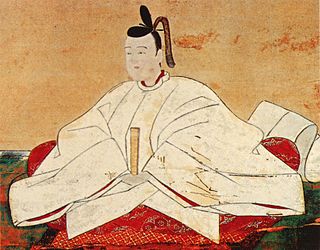
Toyotomi Hideyori was the son and designated successor of Toyotomi Hideyoshi, the general who first united all of Japan. His mother, Yodo-dono, was the niece of Oda Nobunaga.

Oeyo (於江与), Gō (江), Ogō (小督) or Satoko (達子) : 1573 – September 15, 1626) was a prominently-placed female figure in the Azuchi–Momoyama period and early Edo period. She was a daughter of Oichi and the sister of Yodo-dono and Ohatsu. When she rose to higher political status during the Tokugawa shogunate, she took the title of "Ōmidaidokoro". Following the fall of the Council of Five Elders, Oeyo and her sisters were key figures in maintaining a diplomatic relationship between the two most powerful clans of their time, Toyotomi and Tokugawa. Due to her great contributions to politics at the beginning of the Edo period she was posthumously inducted into the Junior First Rank of the Imperial Court, the second highest honor that could be conferred by the Emperor of Japan.
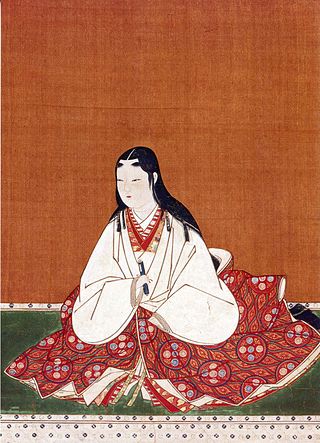
Oichi was a female historical figure in the late Sengoku period. She is known primarily as the mother of three daughters who became prominent figures in their own right – Yodo-dono, Ohatsu and Oeyo. Oichi was the younger sister of Oda Nobunaga; and she was the sister-in-law of Nōhime, the daughter of Saitō Dōsan. She was descended from the Taira and Fujiwara clans.
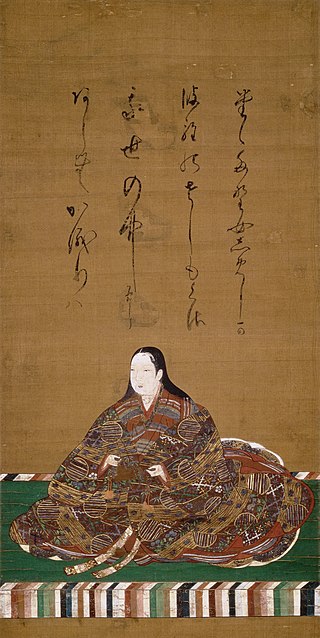
Yodo-dono (淀殿) or Yodogimi (淀君) was a prominently placed figure in the late-Sengoku period. She was the daughter of Oichi and sister of Ohatsu and Oeyo. She was a concubine and second wife of Toyotomi Hideyoshi, who was then the most powerful man in Japan. She also became the mother of his son and successor, Hideyori. Her time period being that of large turmoil and overhaul, Yodo-dono had an interest toward both politics and administration. She actively acted in the restoration of the Toyotomi clan after the fall of the Council of Five Elders, as Hideyori's guardian. Alongside her son, Yodo-dono led the last anti-Tokugawa shogunate resistance in the siege of Osaka.
Ōno Harunaga was a general under Toyotomi Hideyori, and fought in the Siege of Osaka in 1615. He became lord of Osaka castle after the Battle of Sekigahara. Ono led forces against those of Wakayama Castle in the Battle of Kashii, also the Battle of Shigino, and the Battle of Tennoji, where he was killed in action. He held the rank at court of Junior Fifth Rank. Harunaga had a fiefdom of 15,000 koku.

Honda Tadamasa was a Japanese daimyō of the early Edo period, who ruled the Kuwana Domain and then the Himeji Domain. He was the son of Honda Tadakatsu.

Ohatsu (お初) or Ohatsu-no-kata (お初の方) was a prominently placed figure in the late Sengoku period. She was daughter of Oichi and Nagamasa Azai, and the sister of Yodo-dono and Oeyo. Alongside her sisters, she was active in the political intrigues of her day. Ohatsu's close family ties to both the Toyotomi clan and the Tokugawa clan uniquely positioned her to serve as a conduit between the rivals. She acted as a liaison until 1615 in the siege of Osaka, when the Tokugawa eliminated the Toyotomi.
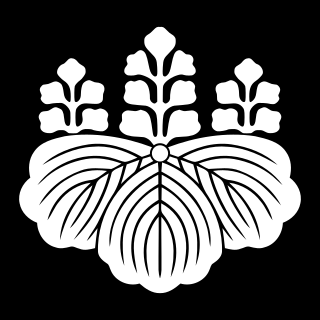
The Toyotomi clan was a Japanese clan that ruled over the Japanese before the Edo period.

Honda Tadatoki was a Japanese daimyō of the early Edo period.
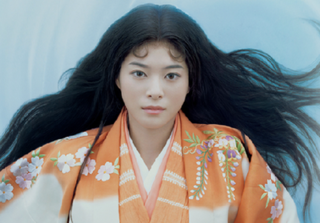
Gō: Himetachi no Sengoku is a 2011 Japanese historical drama television series and the 50th NHK taiga drama. It was written for television by Kumiko Tabuchi, based on her own novel of the same name. The drama stars Juri Ueno in the title role, with Rie Miyazawa and Asami Mizukawa as Cha-cha and Hatsu respectively, the sisters of Gō.
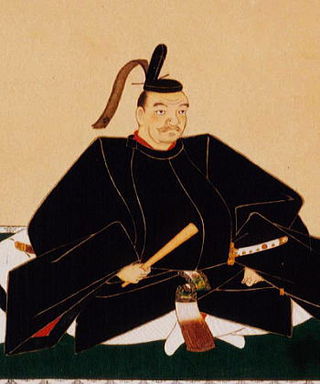
Ikeda Mitsumasa was a Japanese daimyō of the early Edo period.
Tamahime (珠姫) or Tama (1599-1622) was a Japanese noble lady, member of the aristocrat Tokugawa family during the Edo period. She was the second daughter of the shogun Tokugawa Hidetada, and her mother was Oeyo, both important figures who stabilized and ruled the Tokugawa shogunate. She was also the wife of Maeda Toshitsune, the 2nd daimyō of Kaga Domain.
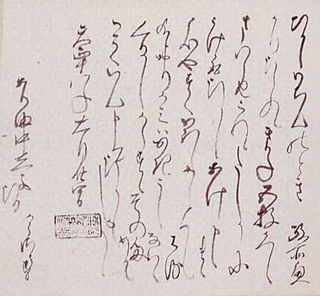
Kōzōsu (孝蔵主) was a Japanese noble lady, aristocrat and retainer of the Toyotomi clan. She was the daughter of Kawazoe Katsuhige, a retainer of the Gamō clan. She was an elite female officer under Nene's command and chief secretary to Toyotomi Hideyoshi.

Lady Acha or Acha no Tsubone was a Japanese noble woman from the Sengoku period to the early Edo period. She was a concubine of Tokugawa Ieyasu, the founder of the Tokugawa shogunate. Due to her intelligence, Ieyasu entrusted her with management of the family's affairs, sending her to negotiate peace during the Siege of Osaka. Her contributions to the stabilization of the Tokugawa shogunate and service to the country were notable for the court; being enducted to the Junior First Rank of the Imperial Court the second highest honor that could be conferred by the Emperor of Japan.

Lady Ōkurakyō or Ōkurakyō no Tsubone (大蔵局) was a Japanese noble woman and retainer of the Toyotomi clan during the Sengoku period. She was the wet nurse of Yodo-dono and later served her son Toyotomi Hideyori. She wielded great power within the Toyotomi family along with the Ono brothers, playing a crucial role before and during the Siege of Osaka.

Toyotomi Sadako was a Japanese noble woman from the Sengoku period and Edo period. She was a daughter of Toyotomi Hidekatsu and Oeyo. In 1609 she ascended to the status of Kita no Mandokoro. Due to being directly linked to prominent figures of her time, she was inducted into the Junior Third Rank of the Imperial Court (Jusanmi), one of the highest honors that could be conferred by the Emperor of Japan.



















